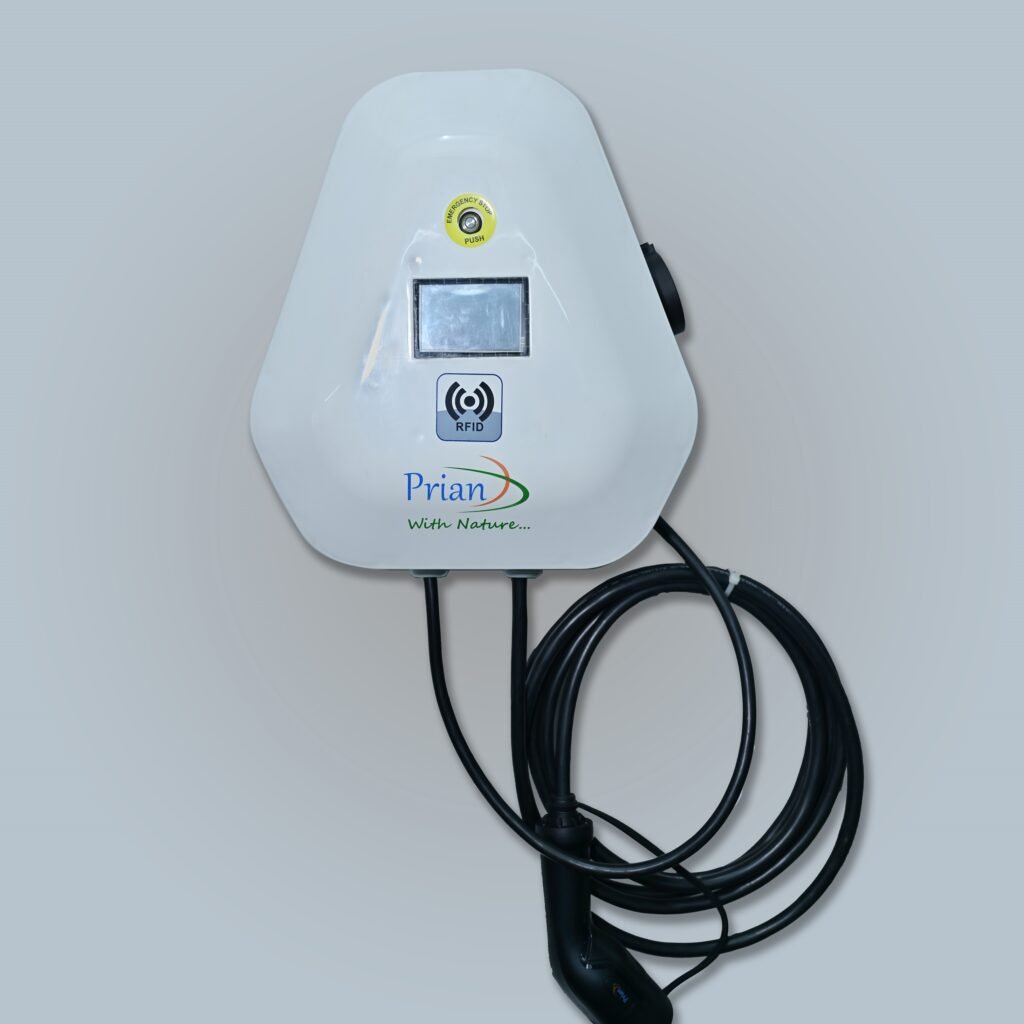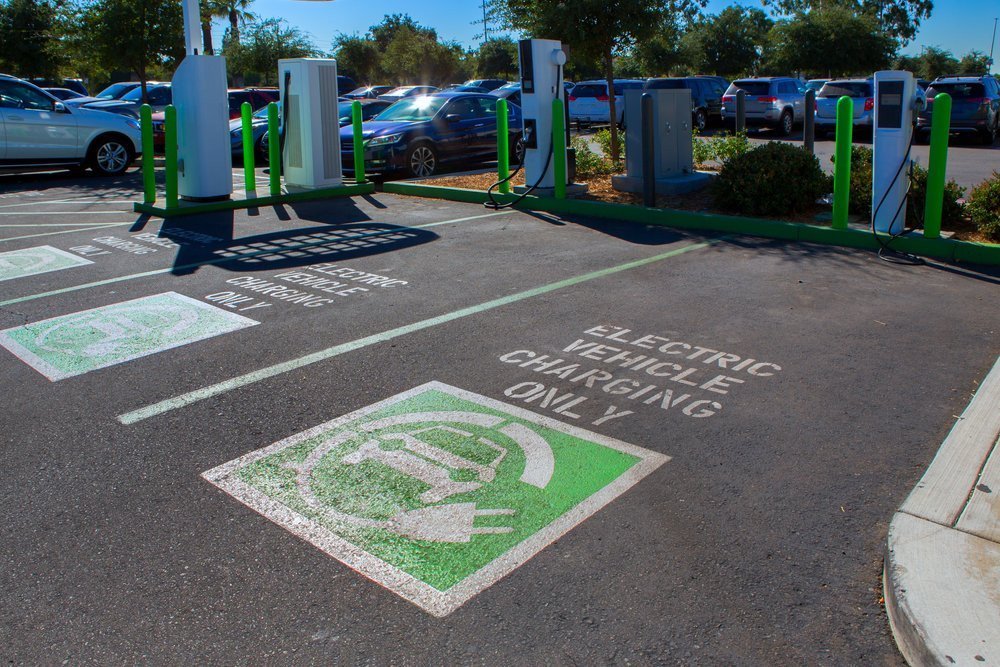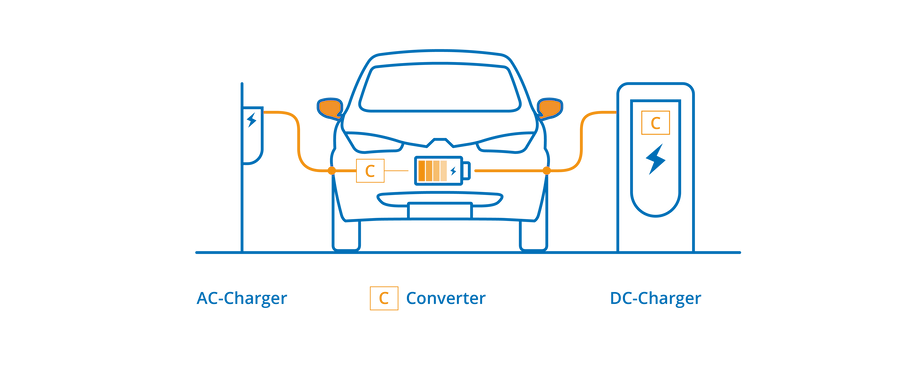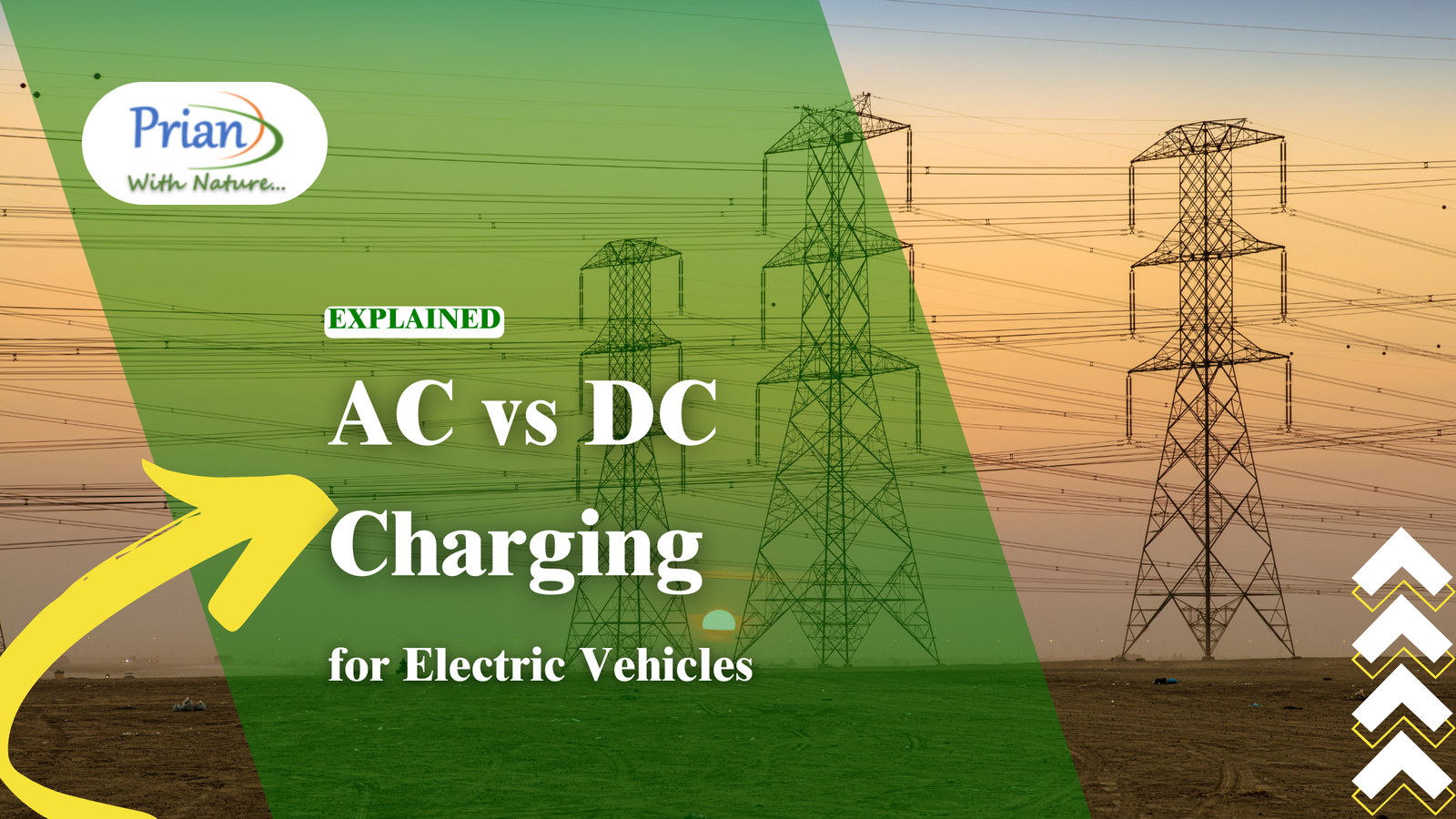Charging an electric vehicle (EV) involves two types of electrical currents: AC (alternating current) and DC (direct current).
AC is predominantly used in home EV chargers and most public charging stations, whereas DC is reserved for fast charging.
The key distinction between AC and DC charging, especially regarding charging time, lies in where the AC is converted to DC—either within the vehicle or at the charging station.
This article dives into the differences between AC and DC EV charging and explains how each process functions.
AC & DC Electrical Currents Explained
To fully understand how EV charging works, it’s essential to grasp the basics of AC and DC electrical currents.

- AC (Alternating Current): This type of current alternates its direction periodically and is the standard form of electricity supplied by power grids worldwide. It’s the ideal form of electricity that comes from power plants and into your home because it’s good at traveling long distances without losing much energy. This is why the outlets in your home and most public EV charging stations use AC power.
- DC (Direct Current): Unlike AC, DC flows in a single direction. Batteries, including those in electric vehicles, store energy as DC. When it comes to charging an EV quickly, DC is used because it can transfer power more efficiently, making fast charging possible.
AC Charging in Electric Vehicles
When you charge your electric vehicle (EV) using AC power, it’s a process that happens pretty seamlessly, but there’s a lot going on behind the scenes.
The electricity that powers your home or a public charging station is alternating current, or AC. This is the standard type of electricity that flows through the grid because it’s excellent for traveling long distances, which is why it’s used for most household outlets.

Now, when you plug your EV into an AC charging station, the station delivers this AC power to your car. However, your EV’s battery doesn’t store energy in the form of AC; it needs direct current, or DC, which flows in just one direction. This is where your car’s onboard charger comes into play. The onboard charger is like the middleman in this process—it takes the AC power coming from the station and converts it into DC power that your battery can store and use. In AC vs DC charging for EVs, this is the crucial difference.
Once the AC power is converted to DC, it’s sent to the battery, where it gets stored until you’re ready to hit the road. The speed at which your car charges with AC depends on the power output of the charging station and the capability of your onboard charger.
Generally, AC vs DC charging isn’t as fast as the latter. This is why it’s perfect for times when you can leave your car plugged in for a while, like overnight at home.
So, in essence, AC charging is convenient and widely available, making it a practical option for everyday use, especially when you have some time to spare.
Pros & Cons of AC Charging in EVs
Pros:
- Cost-Effective: The installation and maintenance of AC charging stations are generally less expensive than DC fast chargers, making them more accessible to a broader range of users.
- Less Stress on the Battery: AC charging is slower than DC fast charging, which can be gentler on your EV’s battery and potentially extend its lifespan.
- Reduced Infrastructure Requirements: AC chargers typically don’t require significant upgrades to electrical infrastructure, making them easier to install in existing buildings.
Cons:
- Slower, but Safer Charging Speed: AC charging is generally slower than DC fast charging, which can be inconvenient if you need a quick top-up or are on a tight schedule.
- Not Ideal for Long Trips: Due to its slower speed, AC charging is less suitable for long road trips where you need to recharge quickly and get back on the road.
- Limited Public Fast Charging: AC charging stations in public places often don’t provide the rapid charging speeds needed for quick stops, which can be a drawback when you’re in a hurry.
DC Charging in Electric Vehicles
When it comes to AC vs DC charging, the process of DC charging is all about speed and efficiency. Unlike AC charging, where your vehicle has to convert the power from AC to DC before it can be stored in the battery, DC charging skips that step entirely.
Here’s how it works in a nutshell.

When you pull up to a DC fast charging station like a Tesla Supercharger, the station itself handles the heavy lifting. It takes the AC power from the electrical grid and converts it into DC power right there, before it ever reaches your car.
This means that when you plug in your EV, the charging station is delivering DC power directly to your battery, without onboard conversion. This direct delivery is why DC charging is so much faster. It’s already in the form your battery needs, so it can go straight to charging at high speed.
DC fast chargers can supply much higher power levels than typical AC chargers. So you can add significant range to your vehicle in a short amount of time.
For example, a powerful DC charger might give you 200-300 kilometers (125-185 miles) of range in just 20-30 minutes, making it perfect for road trips or situations where you need a quick boost.
However, this speed comes with some trade-offs.
DC chargers are more expensive to install and maintain, which is why you usually find them in strategic locations like highways or busy urban centers.
Also, while DC fast charging is incredibly convenient for those times when you’re in a hurry, it’s generally recommended to use it sparingly to help preserve the long-term health of your battery.
In short, DC charging is all about getting you back on the road as quickly as possible, making it an ideal option when time is of the essence.
Pros & Cons of DC Charging in EVs
Pros:
- Fast Charging Speed: DC chargers can add a significant amount of range to an EV in a short time, often recharging a battery from 20% to 80% in 20-30 minutes, making them ideal for quick stops during long trips.
- Ideal for Long-Distance Travel: The rapid charging capabilities of DC chargers make them perfect for long road trips, where getting back on the road quickly is a priority.
- Convenient for Fleets: For commercial fleets or ride-sharing vehicles, DC fast charging minimizes downtime, keeping vehicles on the road longer and improving operational efficiency.
Cons:
- Higher Costs: DC fast chargers are more expensive to install and maintain, leading to higher costs for both the provider and the user, making it pricier than AC charging.
- Battery Degradation: Frequent use of DC fast charging can contribute to faster battery degradation over time, potentially reducing the overall lifespan of the battery.
- Not Ideal for Daily Use: DC fast charging is best for occasional use, such as long trips, rather than for daily charging, where AC charging would be more cost-effective and gentler on the battery.
AC vs DC Charging: Which One is Better For Your EV?

When it comes to choosing between AC and DC charging for your electric vehicle, the decision often comes down to balancing speed with long-term battery health.
While DC fast charging is undeniably convenient when you need to quickly add miles to your range, AC charging offers significant benefits, especially for everyday use.
AC charging is typically slower than DC, but this isn’t necessarily a drawback.
Charging your EV overnight using AC power allows for a gentler, more gradual charge that can be better for your battery’s longevity. The slower pace of AC charging reduces the stress on the battery, which helps to maintain its capacity and overall lifespan.
In contrast, the rapid influx of energy during DC fast charging can generate more heat, which, over time, may contribute to faster battery degradation.
For most EV owners, the convenience of AC charging at home is also a major advantage. It’s cost-effective and easy to integrate into your daily routine, ensuring your car is ready to go each morning.
By primarily relying on AC charging, you can take advantage of lower electricity rates, especially if you charge during off-peak hours, and you’ll also be minimizing the wear and tear on your battery.
DC fast charging should be reserved for situations where time is of the essence—like during long road trips or when you’re in a hurry.
Using DC fast chargers occasionally won’t harm your battery, but for day-to-day charging, sticking with AC is the smarter choice for most EV owners.
It’s a practical, affordable, and battery-friendly option that aligns with the long-term benefits of owning an electric vehicle.


Leave a Reply